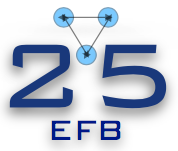Speaker
Description
The Second Flavor of Hydrogen Atoms (SFHA) has been discovered theoretically and proven experimentally to exist for the 1st time – by analyzing atomic experiments related to the distribution of the linear momentum in the ground state of hydrogen atoms (J. Phys. B: At. Mol. Opt. Phys. 34 (2001), 2235). It was motivated by the huge discrepancy: the ratio of the experimental and previous theoretical results was up to tens of thousands. The gist of the theoretical discovery was that for the states of zero angular momentum (S-states), the so-called “singular” solution of the Dirac equation outside the atomic proton, which was usually disregarded, can be matched without any problem with the regular solution inside the proton with the allowance for the experimental fact that the charge density inside protons has the maximum at r = 0. So, for this second solution the wave function did not have a singularity at the origin and thus there was no reason to disregard this solution. This solution eliminated the above huge discrepancy between the theoretical and experimental results.
Later it was shown that the singular solution of the Dirac equation (with the allowance for the experimental charge distribution inside the proton) is legitimate for all discrete and continuum states of the zero angular momentum (Research in Astron. and Astrophys. 20 (2020) 109). Hydrogen atoms having only zero angular momentum states both in the discrete and continuous spectra constitute the second flavor of hydrogen atoms – called so by analogy with quarks, where, e.g., up and down quarks are called two flavors.
The primary property of the second flavor of hydrogen atoms is that, since they have only the S-states, then according to the selection rules they cannot emit or absorb the electromagnetic radiation: they remain dark (except for the 21 cm spectral line).
The 2nd experimental evidence of the existence of the SFHA was found by analyzing experiments on charge exchange of hydrogen atoms with incoming protons (Foundations 1 (2021) 265).
The 3rd experimental proof of the existence of the SFHA was obtained by analyzing experiments on the excitation of n=2 states of atomic hydrogen by the electron impact (Foundations 2 (2022) 541).
The 4th experimental proof of the existence of the SFHA was obtained by analyzing experiments on the excitation of the lowest triplet states of molecular hydrogen by the electron impact (Foundations 2 (2022)).
There are also two kinds of the astrophysical evidence of the existence of the SFHA. The first one is related to the puzzling observation of the redshifted 21 cm spectral line from the early Universe where it was found that the absorption in this spectral line was about two times stronger than predicted by the standard cosmology (Nature 555 (2018) 67). The qualitative and quantitative explanation of this puzzle by using the SFHA made the latter a candidate for dark matter (Research in Astron. and Astrophys. 20 (2020) 109).
The second astrophysical evidence of the existence of the SFHA related to recent perplexing observations that the distribution of dark matter in the Universe is smoother than predicted by Einstein’s gravitation (Monthly Not. Roy. Astron. Soc. 505 (2021) 4626). However, it turned out that this puzzle can be also explained qualitatively and quantitatively by using the SFHA (Research in Astron. and Astrophys. 21 (2021) 241).
The theoretical discovery of the SFHA was based on the standard Dirac equation of quantum mechanics without any change of physical laws. This presentation should motivate further experiments of the above three types – plus experiments on the formation of the molecular hydrogen ions by collision of protons with hydrogen atoms: the experiments that could yield yet another evidence of the existence of the SFHA.

